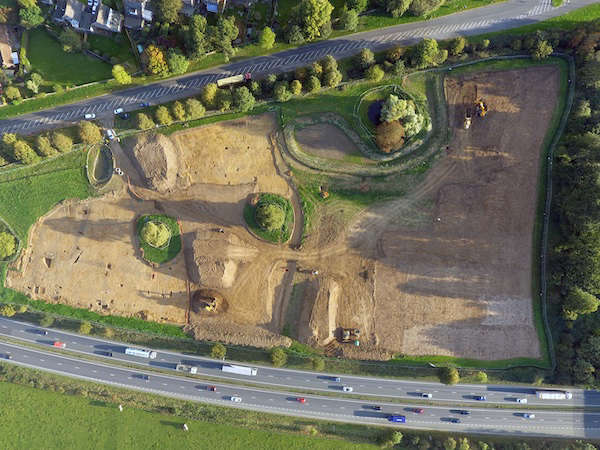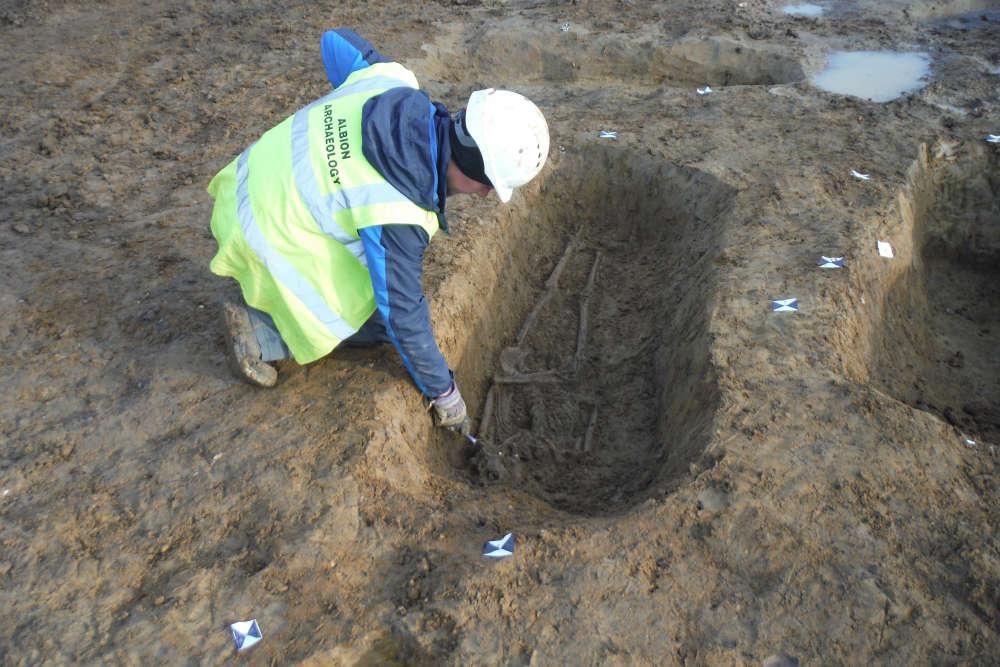
The remarkable discovery was made during an archaeological dig ahead of a new housing development in Fenstanton.
Archaeologists investigating a previously unknown Roman roadside settlement, which includes five small cemeteries, discovered in one grave the remains of a man with a nail through his heel.
Only one previous example like this of crucifixion has been found worldwide, in Israel, although two possible instances have also been claimed in Italy and Egypt. However, the Fenstanton example is the best preserved.
The exciting discovery follows on from previous historically significant digs across Cambridgeshire in recent years which have uncovered preserved Bronze Age buildings and artefacts at Must Farm in Whittlesey, pristine prehistoric occupation sites and burial monuments in Needingworth Quarry, and new Iron Age, Roman and Anglo-Saxon settlements that emerged during the course of the recent A14 road improvement scheme around Cambridge.
The grave of the man who was crucified was discovered during excavations in advance of a new housing development by Tilia Homes (previously known as Kier Living) south of Cambridge Road.

Osteologist (human bone specialist) Corinne Duhig from Wolfson College, Cambridge, said: “The lucky combination of good preservation and the nail being left in the bone has allowed me to examine this almost unique example when so many thousands have been lost.
“This shows that the inhabitants of even this small settlement at the edge of empire could not avoid Rome's most barbaric punishment.”
Inside the cemeteries, 40 adults and five children were buried, with a specialist study showing that some family groups were present. The Roman graves, now fully excavated, also included a number of archaeologically significant artefacts.
The results of the excavation will be formally published when analysis of the site’s finds and evidence has been completed.


 Cambridge E-Bike hire scheme set for expansion
Cambridge E-Bike hire scheme set for expansion
 Ely graffiti vandal avoids jail
Ely graffiti vandal avoids jail
 Drink driver who urinated in a police van is sentenced
Drink driver who urinated in a police van is sentenced
 Strawberry Fair cancelled due to costs
Strawberry Fair cancelled due to costs

